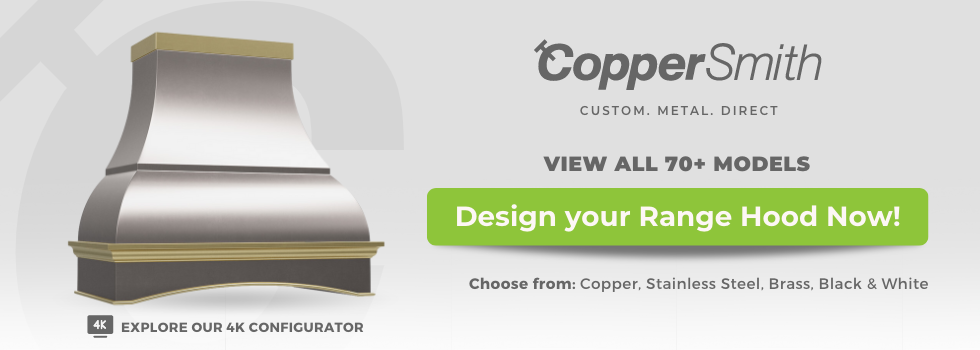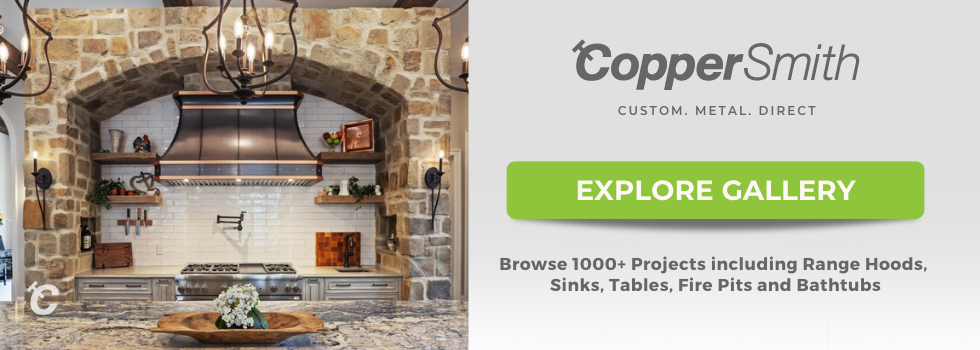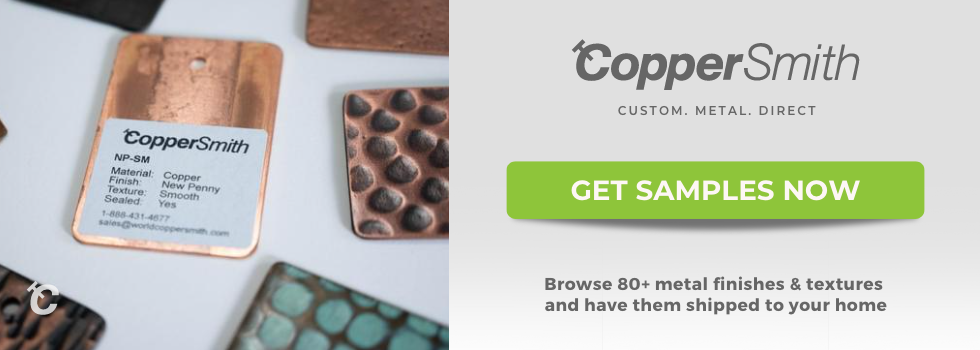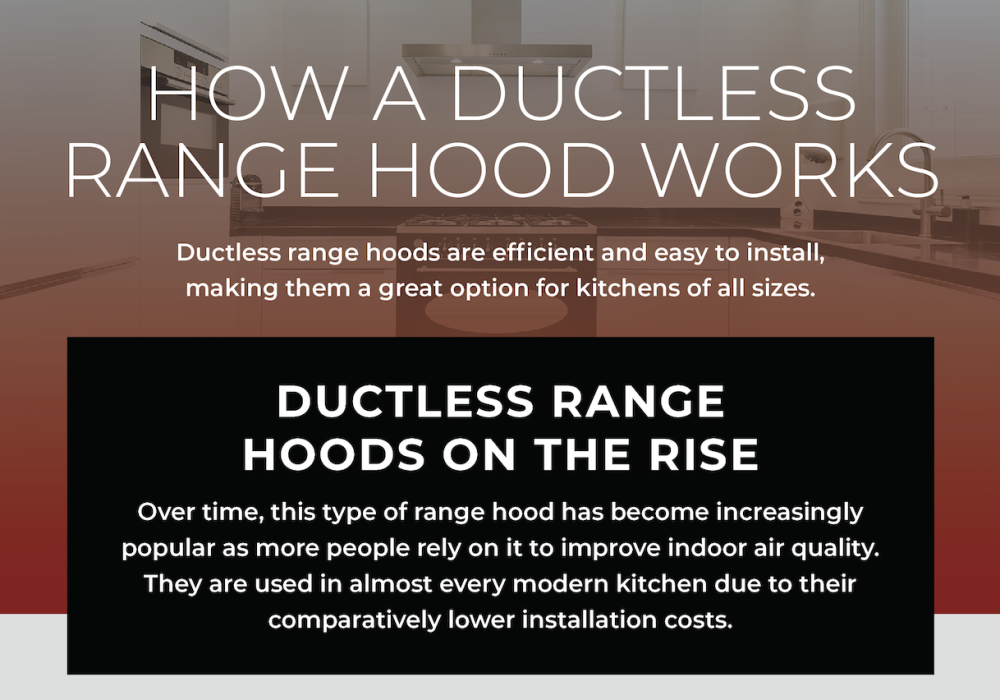
The ductless range hood or recirculating range hood is one of the most efficient kitchen appliances. They work well because they don't require ductwork and can seamlessly fit into any kitchen design. You don't need to knock out walls or install new plumbing and electrical lines to provide your cooking area with cleaner air. An unvented range hood works just like a kitchen fan hood. Air enters the hood via the intake grille located near the ceiling. As the air moves through the hood, it pulls in any kitchen odors and smoke. Then, the air goes through a charcoal carbon filter, trapping the air inside the hood. Finally, the filtered air leaves the hood and returns to the room where you cook food. In this post, you'll find out more about this innovative kitchen installation.
Ductless Range Hoods on the Rise
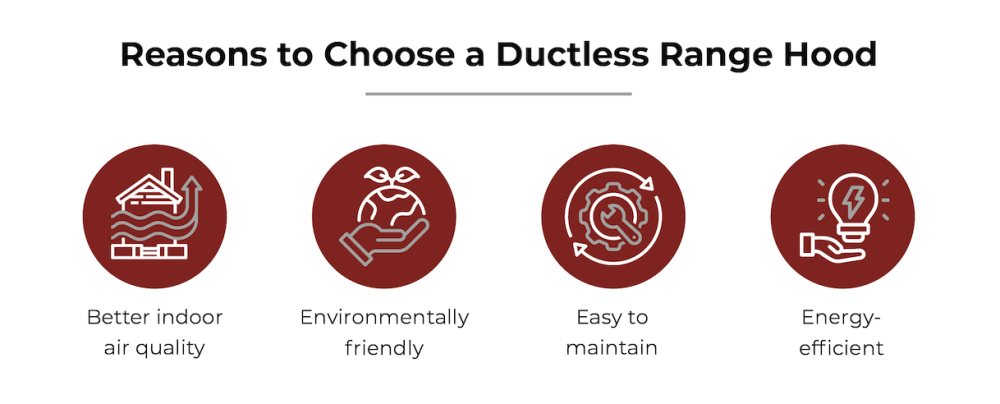
Range hoods have been around for decades. Over time, this type of range hood has become increasingly popular as more people rely on it to improve their indoor air quality. They are used in almost every modern kitchen due to their comparatively lower installation costs. But are they worth the investment? Read on to find out more.

Ductless Range Hoods: The Good and the Bad
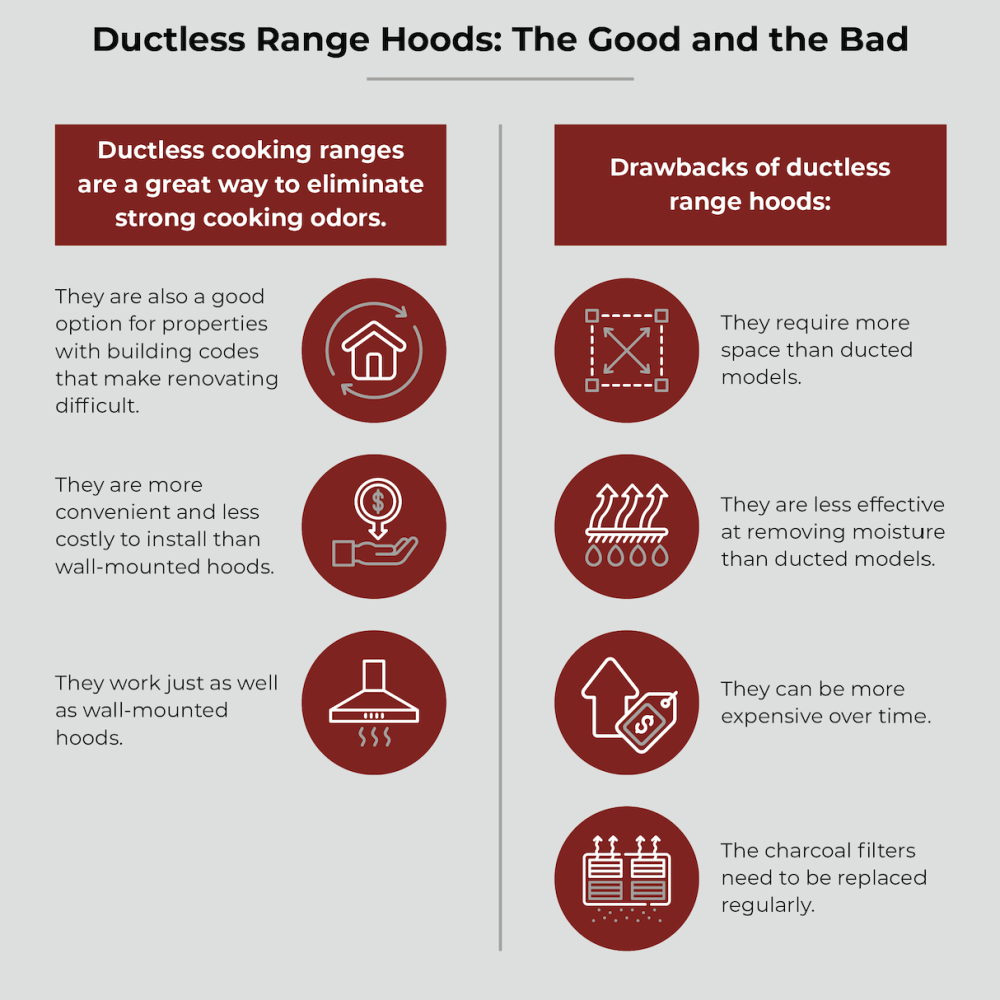
A ductless cooking range is one of the best ways to eliminate strong cooking odors without opening up the kitchen walls. In addition, an installation is an excellent option for properties where building codes may make renovating difficult. They are also more convenient and less costly to install, especially where a kitchen island is present. However, they work just as well as wall-mounted hoods. This model of kitchen range hoods doesn't require the ductwork that comes with a ducted system. So they are the perfect option for those who want to avoid installing new plumbing or electrical lines. Ventless range hoods provide a cleaner environment. Because they remove smoke and other pollutants from the air before it reaches your lungs, they can help you breathe better than conventional range hoods.
However, there are some negatives to having a ductless range hood in your kitchen. For example, you must ensure there's enough space for the unit's exhaust fan. And, while the air in your kitchen and cooking surfaces may be cleaner, a ductless range hood isn't as effective as a ducted model in removing moisture. So you're looking at a likely increase in humidity when using a ductless system. A ductless hood is easy to install but can cost more money over time. In addition, the replaceable charcoal filters need to be swapped out from time to time. A rule of thumb is to replace the charcoal filters at least every three to four months.
There are many different types of filters on the market. Still, if you want to increase the longevity and performance of your unit, it's best to buy a good-quality filter. Unfortunately, this can run up costs too. While the system can protect you from indoor pollution, the range's noise levels may result in many opting not to use it.
Ducted vs. Ductless
Ductless range models have grown in popularity, but some still prefer the more traditional types of range hoods. To help you decide the perfect fit for your cooking habits and the type of cooking required, it's helpful to look at how the two basic types of units compare.
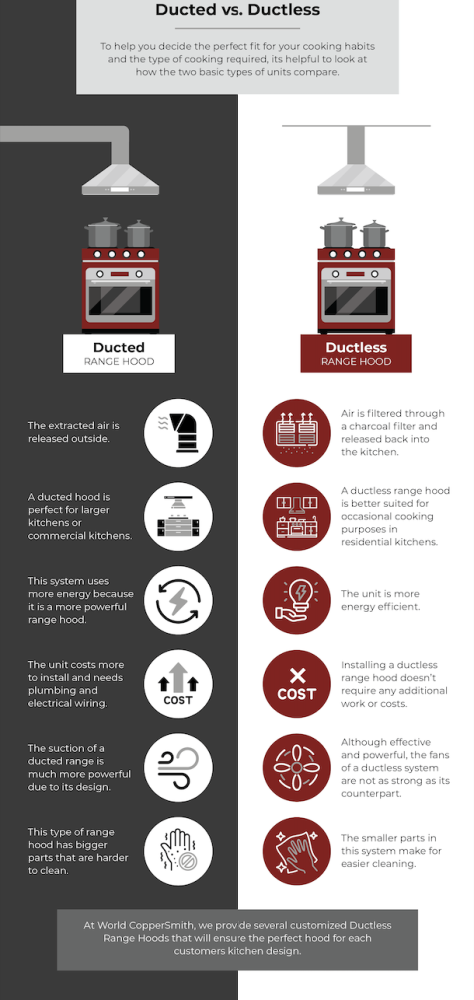
Filtration
A ducted hood is much more effective at filtering all forms of air pollution and cooking odors out of your home. It also helps to keep cooking surfaces cleaner as it sucks out smoke particles and cooking emissions, especially if greasy food is prepared often. It draws the food odors into the unit through a plenum chamber. This chamber is connected to the ductwork that runs throughout your house. Once the air goes through the filter, it exits the unit through a chimney.
On the other hand, a ductless range hood doesn't draw air into the unit through the same method as a ducted hood. Instead, it draws air into the unit through its own intake grille. After passing through the charcoal filter, the filtered air is released back into the room where food is being made.
Application
A ducted range hood is effective in any kitchen and is an excellent option in a commercial setting where heavy cooking takes place, and additional ventilation is required. If you only cook occasionally, the ease of a ductless range hood may be better suited to your cooking style.
Energy Usage
A ductless range hood is more energy efficient than its ducted counterpart. Therefore, an excellent ductless range hood will use less electricity than other types of units.
Installation Options
When shopping for a range hood, ensure you get one that fits your space and pocket. Ductless units are usually placed under the countertops because they don't require a dedicated space. However, they still need to draw hot air away from the stove.
Ductless installation doesn't require any extra piping for its ducts. So it works great in kitchens with an island hood or areas too small for the additional plumbing. Instead, it uses a powerful blower to pull air and smoke from cooking through the filters. At World CopperSmith, we provide several customized Ductless Range Hoods that will ensure the perfect hood for each customer's kitchen design.
Suction Power
Ductless systems have weaker fan power than ducted models. They can only produce about 200 CFM (cubic feet per minute). If your question is why the suction power is so low, it's because these systems suck out air and smoke instead of pulling it through. Ductless systems are designed to distribute air throughout the room, not extract it entirely.
Durability
Because ductless range hoods do not have a duct, they are made of light materials. As a result, these parts tend to be smaller and thus easier to clean. They are generally more durable than ducted range hoods because they're made with heavier materials.
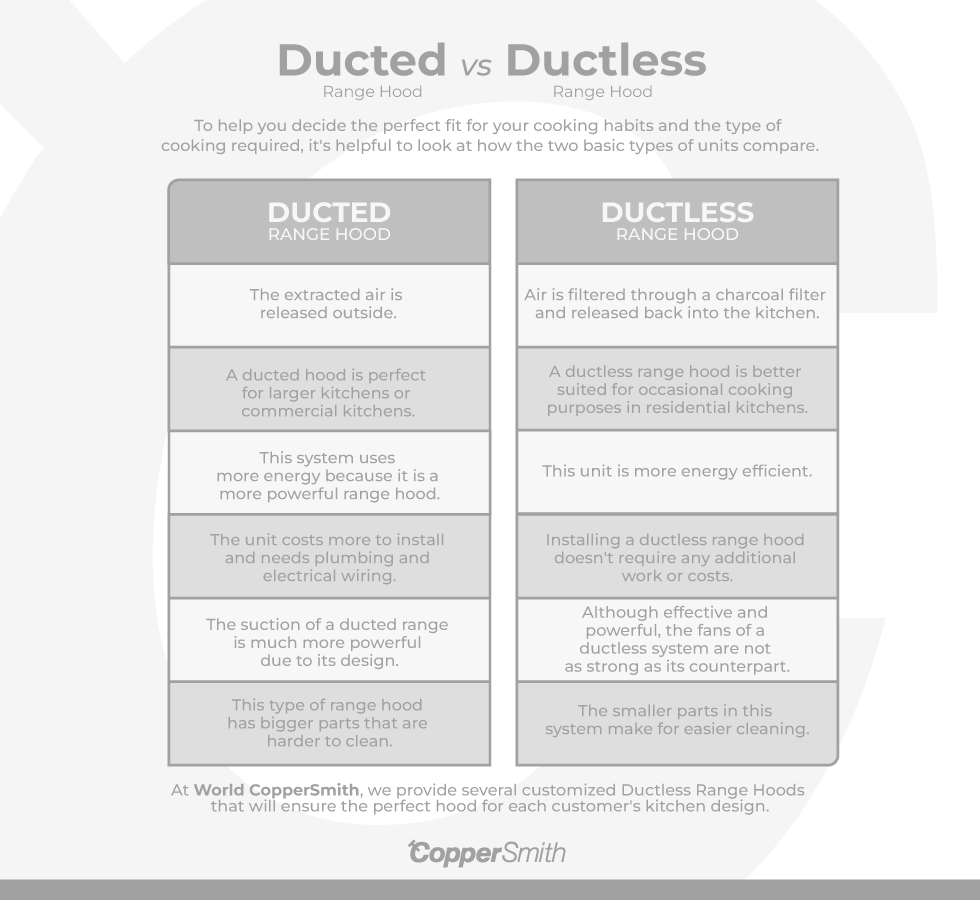
The Main Difference
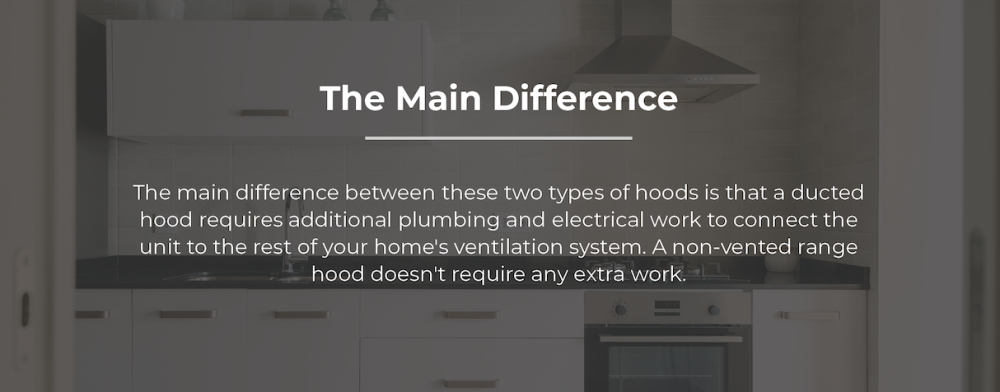
The main difference between these two types of hoods is that a ducted hood requires additional plumbing and electrical work to connect the unit to the rest of your home's ventilation system. A non-vented range hood doesn't require any extra work.
Are They Worth It?
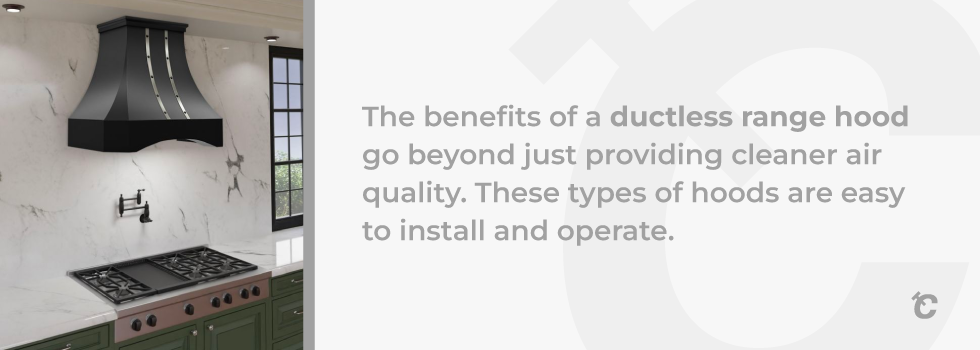
A ductless model isn't necessarily better or worse than a conventional model. Still, it does offer several advantages over traditional systems. For one thing, ductless ranges are much easier to install because there's no ductwork involved. This makes them ideal for compact kitchens where there is no window or space is an issue. Since they don't require ducting, these vent hoods aren't subject to the same energy efficiency standards as conventional venting systems. Recirculating range hoods also have fewer moving parts, so they tend to last longer. In addition, they can be installed without having to tear up walls, floors, or ceilings. Despite being easier and cheaper to install, ductless range hoods run up costs in time. Why? Because you'll need to buy new charcoal carbon filters every few months. You won't have to do that with a standard ducted range hood.
Reasons to Choose a Ductless Range Hood
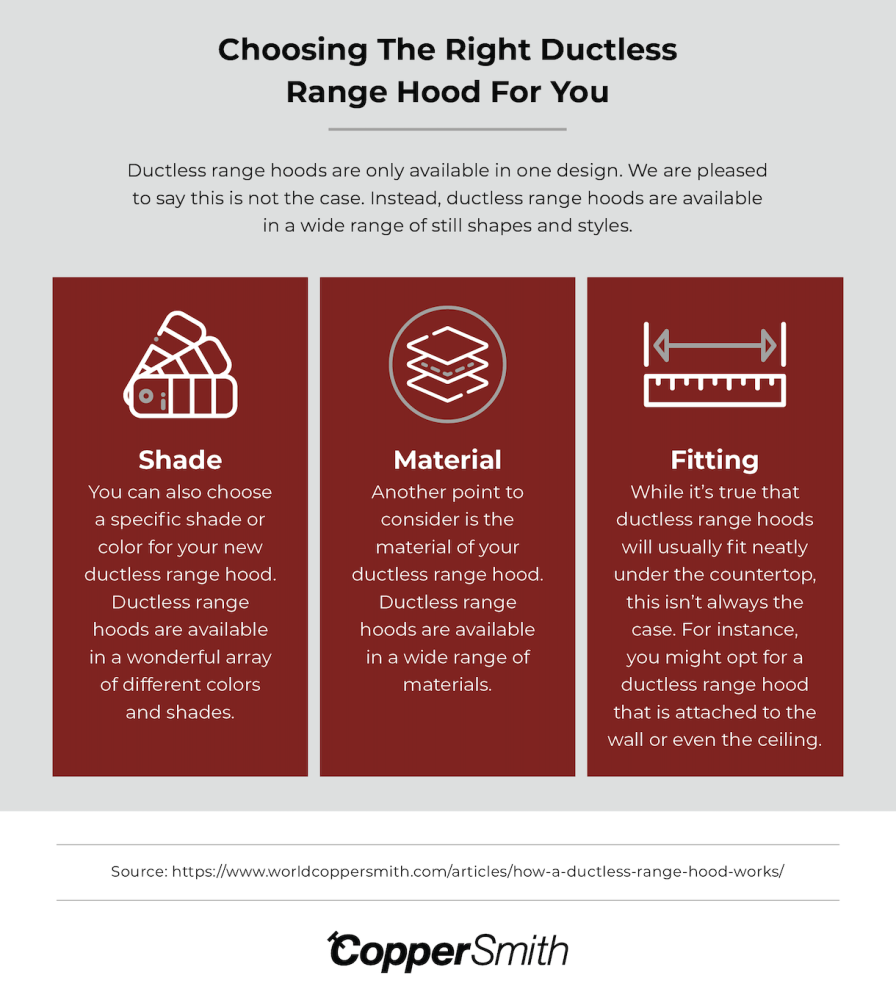
- A ductless range hood provides better indoor air quality than a traditional range hood. And because it does not release the polluted air outside, it is also environmentally friendly.
- This hood doesn't use vents or ducts to pull air into the kitchen. Instead, it draws air directly out of the room where cooking happens.
- Because no air ducts are involved, you won't have to worry about checking if the filters are clogged, or the gaskets are leaking.
- You'll also save money in the energy department because you won't have to pay for energy costs associated with heating or to cool the air in your home.
The benefits of a ductless range hood go beyond just providing cleaner air quality. These types of hoods are easy to install and operate. And because they're self-contained, they're less likely to break down over time.
Choosing The Right Ductless Range Hood For You
You might think that ductless range hoods are only available in one design. We are pleased to say this is not the case. Instead, ductless range hoods are available in a wide range of still shapes and styles. As such, it’s easy to find the perfect option for your home. The right ductless range hood won’t just provide the right practical benefits. It will elevate your entire kitchen design and ensure that you love your kitchen space even more. Here are some of the key points that you should consider. Shape
First, you should consider the shape of the ductless range hoods. A ductless range hood can match the shape and aesthetic of the rest of your kitchen. Or, you can choose a shape that stands out and immediately catches attention. Depending on the shape you choose, it can make your kitchen look more contemporary or fit well with a vintage style for your home. At CopperSmith, we have a wide selection of shapes for you to choose from. This means that you can easily find the option that fits perfectly with your overall design.
Shade
You can also choose a specific shade or color for your new ductless range hood. Ductless range hoods are available in a wonderful array of different colors and shades. This means that they can fit seamlessly with the color palette that you have already selected for your kitchen. Or, you can think about ensuring that it is the centerpiece feature by choosing a completely separate shade or color. Don’t forget, the range hood will always be just at eye level. As such, it’s one of the first things that people will notice when they walk into your kitchen.
Material
Another point to consider is the material of your ductless range hood. Ductless range hoods are available in a wide range of materials. As such, it’s important to select the option that provides the right practical benefits. At CopperSmith, we specialize in selling the highest standard of copper range hoods. Copper ductless range hoods provide a lot of benefits. They have a unique aesthetic and are easy to maintain. It’s a unique option for your kitchen that is absolutely going to stand the test of time. Known as the ‘eternal meta’ copper is by far one of the most durable materials used when designing a kitchen.
Fitting
While it’s true that ductless range hoods will usually fit neatly under the countertop, this isn’t always the case. For instance, you might opt for a ductless range hood that is attached to the wall or even the ceiling. Your choice here will often depend on where your oven is located. For instance, you could have a kitchen island. If that’s the case, then you will need to make sure that your ductless range hood is fitted directly above this. If you fail to do that, then it’s not going to provide the practical benefits that you need.
How To Maintain A Ductless Range Hood
It’s important to make sure that you are taking the time to ensure that your ductless range hood is well maintained. Ductless range hoods are quite easy to maintain but there are still certain steps that you should take.
For instance, you will need to make sure that you are checking the fan. To do this, turn off the power and inspect the fan for any dirt or debris. If there is a large build up of dirt, then you will need to consider replacing the blade.
You should also make sure that you are cleaning the inside of the ductless range hood. This will ensure that it continues to function correctly without any issues. Grease and odors can ham up the filter fast. It’s easy to clean the inside of your ductless range hood using a soft cloth. Again, it’s important to ensure that the range hood is fully switched off before you decide to take this step.
Some materials are easier to maintain than others. Copper range hoods are antibacterial and resistant to grease as well as other contaminants. As such, you should find it far easier to keep the outside of a copper range hood clean and beautiful. If you are interested in purchasing a copper range hood, get a free quote for one of our top products today.
Ideally, you should strive to give your ductless range hood a full inspection and thorough clean every couple of months to ensure it continues to work effectively.
The Best of Both Worlds
If you're looking for a new kitchen ventilation system but can't decide whether your want to go with a conventional range hood or a ductless system, consider a conversion kit.
Once installed, the Ductless Conversion Kit easily converts a traditional ducted range hood into a ductless vent hood. In addition, the highly effective charcoal filters offer excellent filtration, so you can rely on their ability to keep your kitchen clean.

